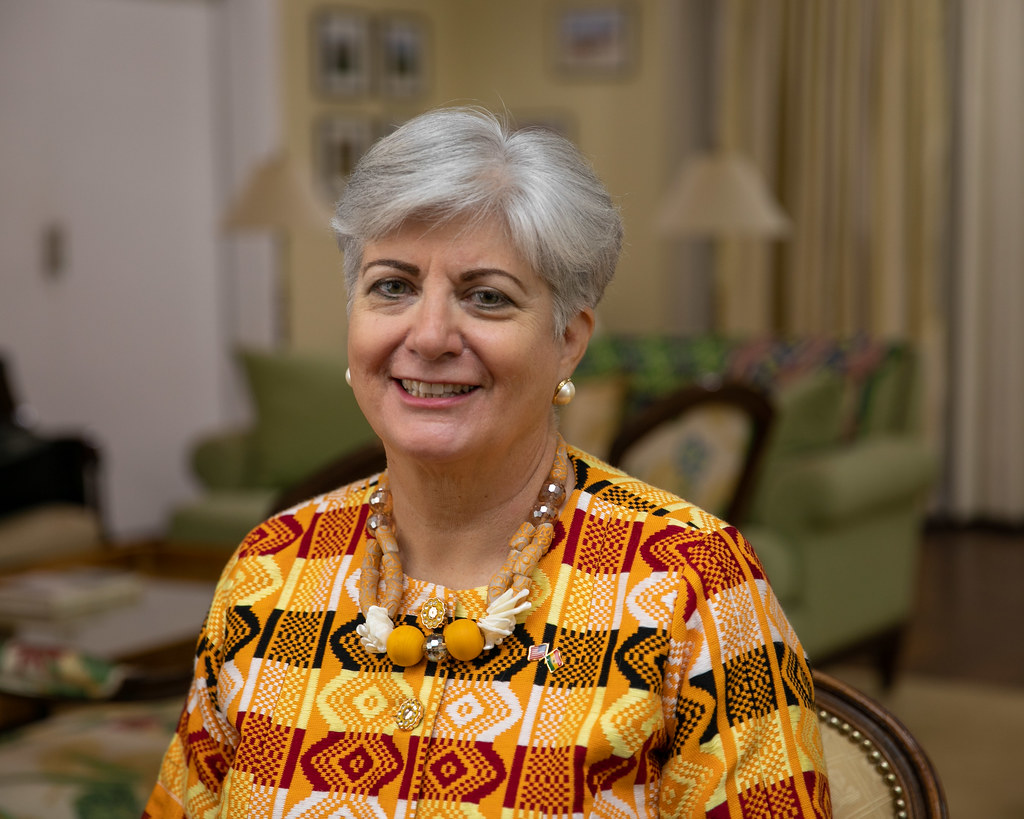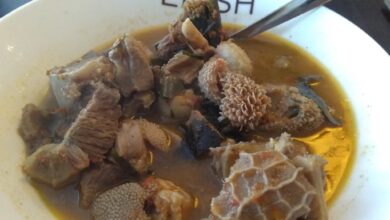Kente Cloth: History, Symbol, Production, Designs and Decoration

Ghanaian Kente cloth is perhaps the most prominent and renowned textile in Africa, and it is often used as a symbol of wealth, social rank, and cultural refinement.
Once reserved for royalty, today’s woven ‘cloth of kings’ comes in a wide variety of styles and materials. It is still the most revered and well-known textile in Africa, along with Zaire’s Kuba fabric.
Also Read: How to Make Your Perfume Last Longer: Tips
Histories of Kente Cloth

Bonwire, a tiny village in Ghana, is considered the kente industry’s epicenter. The Ewe and Akan tribes started producing strip-woven textiles about the year 1000 AD. This practice sprang from a far older African weaving history that dates back to around 3000 BC.
Kente fabric is called nwentoma, which means “woven cloth” in Asante. The term “kente,” from which the word “kente” is derived, means “basket” since the fabric was traditionally woven from palm fronds.
In 1697, King Osei Tutu sent a group of weavers to the nearby Ivory Coast to learn the intricate craft of kente weaving from the masters there. When they got back to Ghana, the Ashanti royal family commissioned new patterns to be worn at weddings, funerals, religious services, festivals, and other important events.
Even today, in many of the region’s traditional communities, monarchs and supreme chiefs wear kente. You may see it worn in a more relaxed setting, but the textiles sold to the general public will never match the quality of what’s worn by the elite in Ghana.
The Asantehene (Ashanti Chief) officially recognized this cloth as a royal garment, elevating its status by restricting its use at ceremonial events.
Also Read: Traditional Clothing from Africa used to Identify Different Tribes
Traditional Clothing from Africa used to Identify Different Tribes
Kente cloth as a symbol of the gods’ authority
The Ewe are another African people group known for their distinctive kente robes, which are made by sewing together long strips of kente fabric.
It’s important that the fabric strips be as vertically and horizontally straight as they can be, and that the length of the fabric at the bottom is consistent around the wearer’s ankles.
Women often wear a kente skirt, blouse, and an extra garment that may be worn as a shawl or thrown over an arm.
Using a tapestry weave method to produce a design in the weft, as shown in the uncommon fabric below, is a superb example of a unique variation pattern.
Kente Textiles, Ewe
The status and cost of the fabric influence the quality of the yarn used. Kente is often woven from a blend of cotton and rayon, although the finest examples are crafted with silk yarn.
Originally woven with white cotton and indigo patterns, it is now more often seen in monochrome with small, strategically placed pops of color.
Color, pattern, and theme all took on more significance, and they started to be associated with many meanings. The origin of the fabrics’ names need not have any reference to their actual look.
The wearer’s clan, its history, and its particular set of ideals are all represented in colors, patterns, forms, and names.
When worn, it serves as a visual depiction of a person’s personal or cultural history, philosophy, ethics, religion, politics, and oral storytelling.
Also Read: Nigerian Men Clothing: Traditoanl Outfits, Wears & Style
Kente Cloth and African Americans
Kente fabric initially came to the notice of African Americans in 1958, thanks to a now-iconic photograph of then-President Eisenhower and Ghana’s first president, Kwame Nkrumah, touring the nation’s capital.
The image would go on to elevate Kente fabric well beyond its traditional role as an important West African textile, making it a symbol of African pride and nearly the uniform of Pan-Africanism.
Nkrumah commissioned renowned kente weaver A. E. Asare of Nsawam, Ghana, to create a commemorative cloth for his trip to the United States in 1962; the fabric now hangs at the United Nations Hall in New York.
Kwasi Asare, Asare’s son and a citizen of the United States of America, is a Ghanaian native and an integral part of the movement to preserve and celebrate the rich cultural history of West African textiles known as kente.
Look here for the backstory here
Kente Cloth Production
Handmade by skilled craftsmen who have perfected their profession, Kente’s weaving equipment is of the highest quality.
The loom, heddles, treadles, shuttles, bobbins, beaters, and sword sticks are all crafted from wood. During warp-laying, several bobbins are set up and held.
There is a name for every part of the machinery, and everything is treated with the utmost reverence.
When the Portuguese introduced silk cloth, a dramatic shift occurred in kente manufacture. Before full skeins of silk were imported and utilized in the manufacturing of royal, holy fabric, the silk cloth had to be dismantled to use the silk thread.
As may be seen above, strips are weaved using a strap loom. Each strip has its own unique color scheme and pattern repeat and is around 4 inches in width overall.
The individual cloths are then joined by stitching to form the larger fabric piece.
Pattern and color placement is crucial, so it’s important to plan ahead and give it some attention as you build. Edges, which would be most visible when worn, are often where patterns shift.
There are more than 300 distinct Kente designs, and each new one must be presented to the kings before it can be made available to the public.
Also Read: Traditional African Clothing: A Cultural Heritage of Africans
Traditional African Clothing: A Cultural Heritage of Africans
Kente weavers

The majority of Kente weavers are males, whereas women often spin raw cotton into yarn, dye the yarn, stitch strips of fabric together, and help with placement and marketing.
Some factories make woven kente on a bigger loom and scale, while others began making mill-woven, roller-printed fabric in enormous meterage and a variety of designs in the early 1960s.
Even though the name “kente” was offensive to the Asante and Ewe weavers, this cloth was a welcome alternative to the handwoven counterpart, which was bulky, uncomfortable, costly, and difficult to come by. Today, you can find kente in anything from high-end couture to trendy home decor, and it’s made both by hand and in factories.
Color and pattern symbolism of Kente
Multicolored patterns and motifs, often of a geometric form, are what set out Kente cloth from other types of fabric. Adweneasa refers to the practice of incorporating weft motifs into every void of color.

Colors in traditional African kente cloth have deep symbolic connotations.
1. The most important color in kente fabric is black, which is meant to signify heightened spiritual force, power, and maturity.
2. Color blue connotes tranquility, harmony, and love.
3. The color green is associated with fresh life, rejuvenation, growth, and harvesting.
4. Gold symbolizes opulence, power, and moral rectitude.
5. Peace, innocence, and happiness; the moon is connected with silver.
6. White symbolizes cleanliness, religious ceremonies, and joyous celebrations.
7. Yellow symbolizes prosperity, fertility, royalty, and success.
8. Gray is restorative and purifying; it’s the color of ash.
9. Blood red: rituals, ceremonies, politics, and the afterlife
10. Earth, a source of healing, is symbolized by the color maroon.
11. The color pink symbolizes the vitality and femininity of women.
12. Wearing purple signifies a focus on life’s more delicate, feminine aspects.
Adinkra fabric is another example of a textile from West Africa that has a distinctive stamped pattern. Modern Adinkra and Kente textiles sometimes merge the two styles, adding another layer of meaning and heritage via the blending of colors and patterns. The fabric may be used to broadcast a message to the masses.
Adinkra fabrics are reserved for funerals, whereas Kente are worn for parties and festivals.
Also Read: The Maasai Tribe in Kenya’s History, Culture, and Clothings
The New Age Application of Kente
One of the most remarkable trademarks of the emerging Afrocentric movement is the kente cloth, which highlights the relationship between Africa and the United States.

Adornment and attire of Kente Cloth
The following pair is a great example of how to wear a stunning and attractive wedding gown containing kente fabric, which is widely used for bridal clothes in mix-and-match schemes.
Graduation ceremonies, church meetings (by the congregation and clergy equally), and political rallies all include stoles on an equal platform.
Traditional African kente material is used to make some of these scarves, while others have printed or woven logos or substantial color and design.
Wraps and shawls made from kente fabric are a popular method for women to accessorize. One is quite graphic and modern, while the other is based on more classic design principles but updated with trendy hues.
Clothing, scarves, purses, caps, shoes, and even men’s neckties and bowties are just some of the modern uses for kente.
Bracelets, earrings, and necklaces may all benefit from a kente covering. Mill-woven cloth is also used to make a variety of other fashion items, such as hair decorations, purses, handbags, satchels, and sandals.
These goods are readily available in most marketplaces in Ghana and are favorites among visitors.
Decoration using Kente
Mill-woven kente fabric in gold/yellow and indigo/red colorways is seen below, but kente cloth using traditional weaving techniques is also common for use in home décor and furniture.
Weave and print often integrate non-traditional color symbolism and instead use modern colors and colors that represent contemporary taste and color trends.
Cushions made from kente fabric are a great addition to any decor since they are long-lasting, eye-catching, and comfortable.
Modern Houses in the Kente Style
The amazing Accra, Ghana apartment complex was designed by AKII and is home to West Africa’s tallest structure.
It is a collection of mostly residential units that derive their color scheme and design inspiration from kente fabric, the county’s most famous textile.





